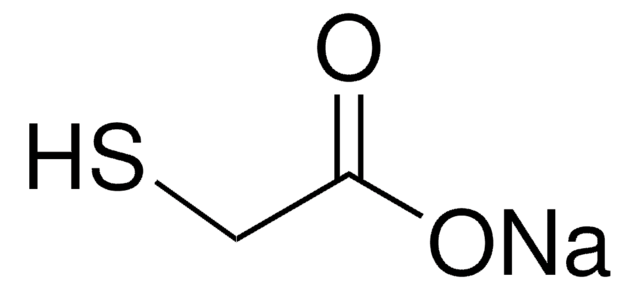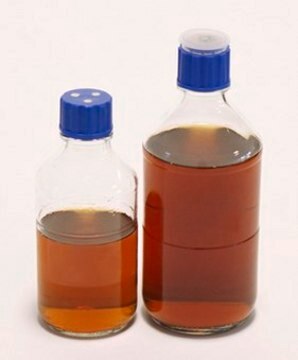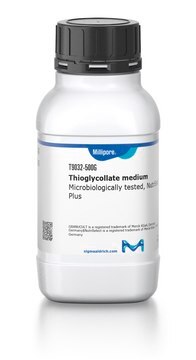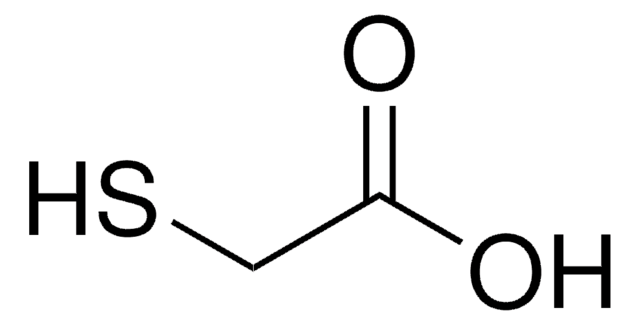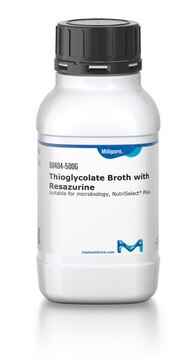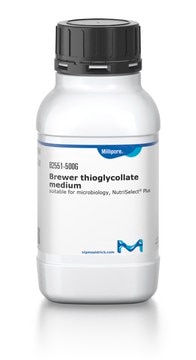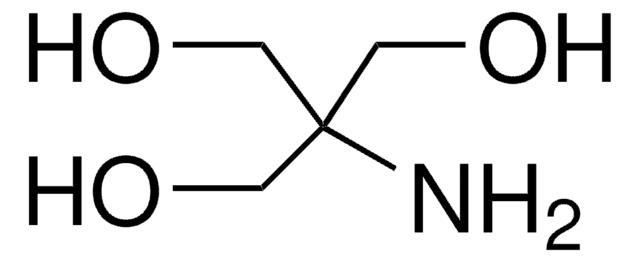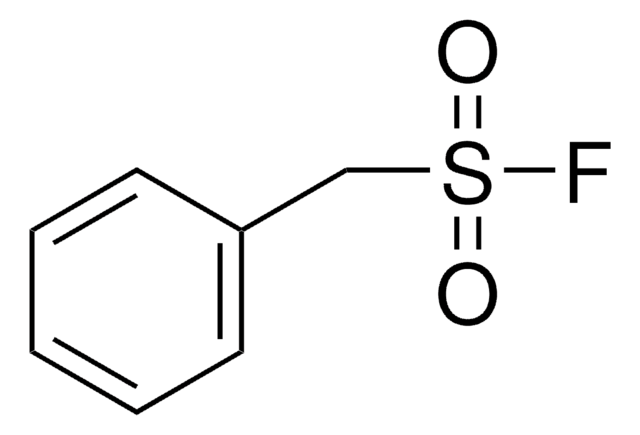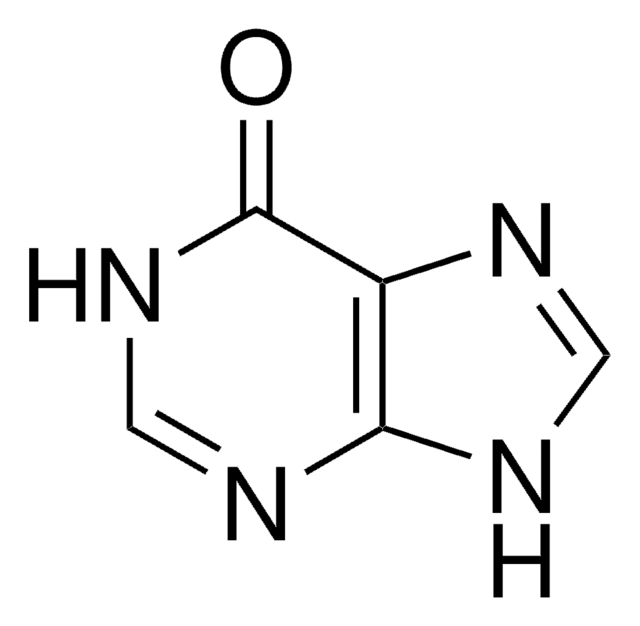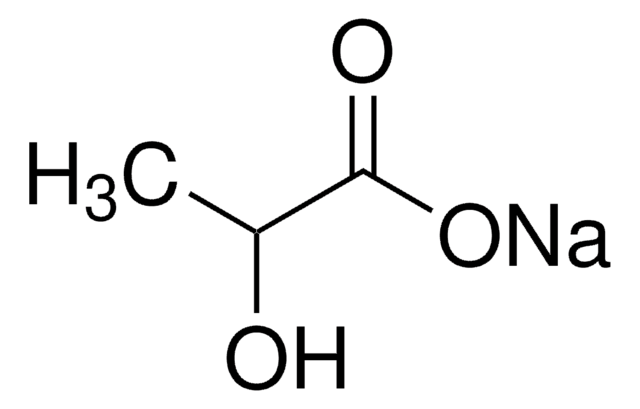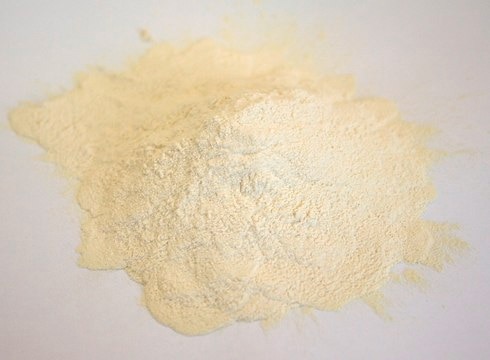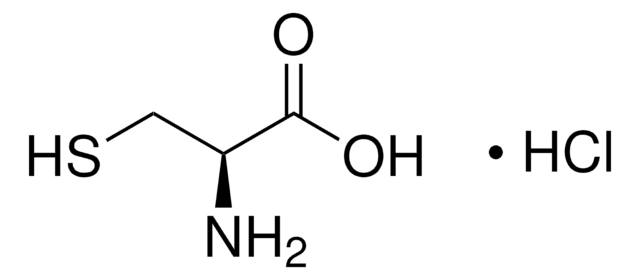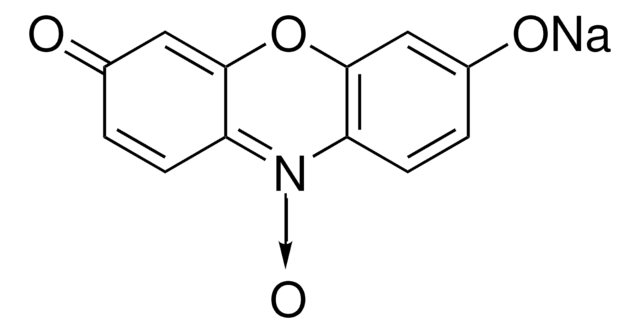1.06691
Sodium thioglycolate
suitable for microbiology
Synonym(s):
Sodium thioglycolate, Thio glycolic acid sodium salt, Thio glycocoll sodium salt, Mercapto acetate sodium salt,,
About This Item
Recommended Products
vapor pressure
<0.1 hPa ( 25 °C)
Quality Level
form
solid
packaging
pkg of 500 g
storage condition
(Tightly closed)
pH
6.7 (20 °C, 100 g/L in H2O)
mp
260-335 °C
solubility
609.1 g/L
bulk density
200 kg/m3
application(s)
microbiology
storage temp.
2-8°C
InChI
1S/C2H4O2S.Na/c3-2(4)1-5;/h5H,1H2,(H,3,4);/q;+1/p-1
InChI key
GNBVPFITFYNRCN-UHFFFAOYSA-M
Related Categories
General description
Application
Analysis Note
Signal Word
Danger
Hazard Statements
Precautionary Statements
Hazard Classifications
Acute Tox. 3 Oral - Acute Tox. 4 Dermal - Met. Corr. 1 - Skin Sens. 1
Storage Class Code
6.1C - Combustible, acute toxic Cat.3 / toxic compounds or compounds which causing chronic effects
WGK
WGK 1
Certificates of Analysis (COA)
Search for Certificates of Analysis (COA) by entering the products Lot/Batch Number. Lot and Batch Numbers can be found on a product’s label following the words ‘Lot’ or ‘Batch’.
Already Own This Product?
Find documentation for the products that you have recently purchased in the Document Library.
Customers Also Viewed
Articles
Learn more about our culture media portfolio for microbial examination of non-sterile products, fully compliant with the harmonized Pharmacopoeia.
Our team of scientists has experience in all areas of research including Life Science, Material Science, Chemical Synthesis, Chromatography, Analytical and many others.
Contact Technical Service